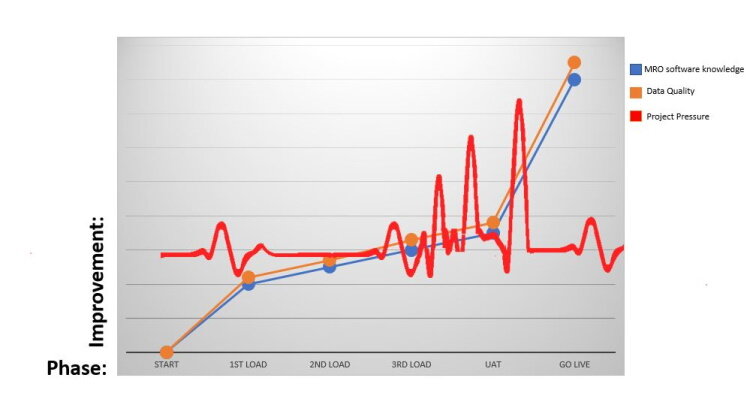What to expect from a data migration project
Data migration within aviation is something which is not frequently done within airlines. Mostly is happens once every 10 to 15 years when important systems, such as MRO software, or Flight Planning systems are replaced. This kind of projects are rarely a one-way trip from system A to system B. Instead, a project of any complexity transforms data substantially and involves multiple data sources to be transformed into a new target. Within the industry data migration suffers from a few myths and misconceptions, so what can people within the airline expect from a data migration project?
It's never about the data migration itself
Data Migration is never the purpose on its own. It always coincides with a larger project often involving replacing critical airline system and introducing new working procedures and processes within the airline. This means that data migration is the enabler of a new system being introduced within the airline and/or new working procedures and processes being introduced. This makes that change management is equally important within data migration projects as the migration of the data itself.
History will unveil itself
Migration of data will also mean that historic data will get scrutinized. Particularly when migrating Aircraft Airworthiness data this can lead to some previously unknown surprises to be unveiled. Including maintenance task overruns or wrongly installed aircraft components. Another example includes spare parts inventory, all to often a data migration project will point out the fact that old systems indicated certain spare parts to be stock despite these not being in stock. This could result in significant inventory write-offs. It’s important to be transparent about this to all stakeholders, even local CAA’s. After all, there is a reason you have started this project.
Keep the pressure steady
Before getting started with the actual data migration it is of utmost importance to conduct a proper fit/gap analysis to discover the areas data needs to be upgraded and enriched to avoid unnecessary surprises in the middle of the project. Next to that working procedures and processes need to be clear and knowledge of the new MRO software among the key-user should develop continuously. This is necessary in order to understand the possibilities the new MRO system is offering and to map the current data accordingly. By following this approach it’s a linear process and pressure on the project is steady (Figure 1). Otherwise it can happen that pressure is rising towards the end of the project (Figure 2) and by all means this should be avoided.
Figure 1: Data Migration Project Linear Curve- Relation between software knowledge, data quality and time pressure
Figure 2: Data Migration Project Exceptional Curve - Relation between software knowledge, data quality and time pressure
An iterative ETL process is not optional
Many of the best practices of data migration centre on its iterative nature. It involves mapping arcane legacy data, modelling targets, developing transformations, and creating test datasets/ environments. The process is iterative, too, involving multiple rollout and handoff phases that may span across several months. Managing such as process without automated ETL (extract-transform-load) tools is equal to setting up the project to fail.
People are as important as the data
As mentioned earlier, data migration projects rarely stand on their own. They are normally part of a larger company initiative of replacing airline critical systems and adopting new working processes. This makes that the people are equally important as the data itself. Typically, you would need people involved that can handle pressure, are able to distinct important issues from minor ones and know how to get things done. Obviously getting people involved that have done migration projects previously is a huge advantage.
Cooperation is the key
As data migration is not a daily activity within airlines, all to often these projects get outsourced to suppliers which do have this experience. As important as the track record and know-how of the selected supplier, are the people from the airline that get involved in the data migration project. It’s the staff of the airline that knows the fine details and peculiarities of the past as well as the internal politics and informal organization.
How EXSYN can help
EXSYN's team of aircraft data and aviation experts utilize a proven data migration framework and methodology. It has been applied to millions of terabytes of master data and includes:
EXSYN’s data migration tool TITAN to reduce project costs and duration
EXSYN’s data warehouse to accelerate your migration
Data mapping and load workshops to develop the best strategy for your situation
EXSYN’s data migration dashboard to monitor the progress and quality of your data migration
Migration of both structured and unstructured data
ISO 27001 data security certified migration approach
Feel free to get in touch with us, we would be happy to discuss your situation.


